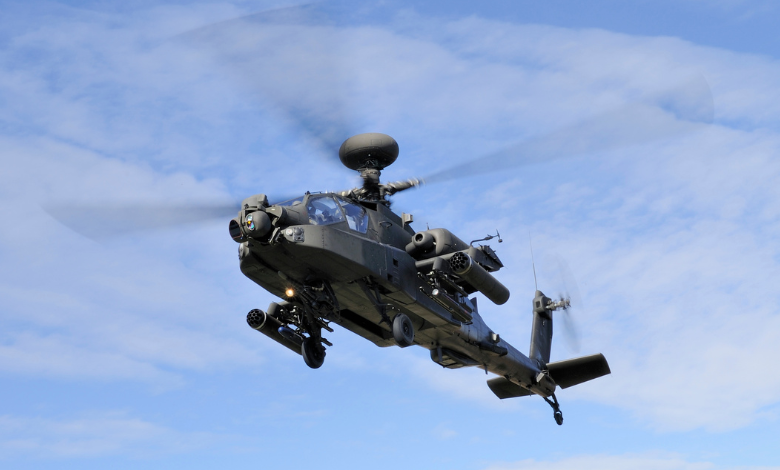Apache helicopter crash alabama

When I first heard of an Apache helicopter crashing in Alabama, a few thoughts ran through my mind: the human cost, how a sophisticated aircraft could go wrong during routine training, and what this means for safety in military aviation. Crashes of military helicopters, especially during non-combat flights, always hit harder because we expect higher standards and rigorous safety protocols.
In this article, I’ll walk you through everything we know so far about this crash: what happened, who was involved, why it might have occurred, how the investigation works, and what lessons could emerge. Along the way, I’ll try to explain technical parts in simple terms, draw parallels with past incidents, and reflect on what this event might mean for the future of Army aviation safety.
Incident Overview: What Happened
Timeline and location
The crash occurred on August 7, 2024, during an afternoon. The helicopter was conducting routine training when it went down on the grounds of Fort Novosel, Alabama. Fort Novosel (formerly Fort Rucker) is a major U.S. Army aviation training facility, located about 94 miles south of Montgomery.
Crew and aircraft
On board was a flight instructor and a student (trainee) pilot. The instructor was identified as Daniel Munger, 46 years old, a retired Army member working as a contractor. Tragically, Munger was killed in the crash. The student pilot survived and was airlifted to a hospital for evaluation and treatment.
The aircraft was an AH-64 Apache helicopter, operated during the exercise. The Apache is a two-seat attack helicopter used by the U.S. Army and allies.
Official response and initial statements
Shortly after the crash, military officials released statements indicating the crash is under investigation and that their primary concern is the welfare of survivors and the family of the deceased. Maj. Gen. Clair A. Gill, commanding general at Fort Novosel, expressed concern over safety and care.
At this early stage, investigators have not publicly confirmed the precise cause or contributing factors.
Although details remain scarce, this crash is particularly significant because it happened during routine training, when risk is presumed lower than in combat. That makes the questions about mechanical failure, inspection regime, or procedural breakdowns all the more urgent.
Read Also: Women’s 400m Hurdles: A Complete Guide to Technique, Training, and Top Performances
The AH-64 Apache Helicopter: Background
To understand how a crash like this might happen, it helps to know the aircraft involved.
Design and role
The AH-64 Apache is a twin-engine attack helicopter, built for close air support, anti-armor missions, reconnaissance, and armed escort roles. It typically carries a crew of a pilot and a copilot/gunner (or instructor/trainee in training flights). The design emphasizes redundancy, protection, and high survivability.
Its capabilities include advanced sensors, targeting systems, and weapons (missiles, rockets, machine gun). In training settings, the helicopter may fly with minimal munitions or in simulation mode to reduce risk.
Because it is a combat-oriented helicopter, the Apache has more complex systems than many civilian helicopters — more moving parts, more stress, and tighter maintenance needs.
Known risks and failure modes
From past incidents, certain failure modes appear more commonly in military helicopters:
-
Tail rotor or tail drive failure: Loss or malfunction of the rotor assembly that counters the main rotor’s torque can cause loss of control or uncontrollable spin.
-
Main rotor or blade failure: Structural cracks, delamination, fatigue, or manufacturing defects may lead to rotor blade separation or breakage.
-
Powerplant or transmission problems: Engine failure, gearbox failure, or coupling issues.
-
Hydraulic system failure: Given that control surfaces rely on hydraulics, leaks or pump failure can degrade control.
-
Human/pilot error or misjudgment: Particularly under stress, transition training, or in marginal conditions.
In one prior case in Alabama (June 2022), an Apache crashed near Fort Rucker (now Novosel). Investigations suggested that a tail rotor blade separated, which triggered a spin. That incident shows a mechanical failure can overwhelm even expert pilots.
Because of these known risks, maintenance, inspection, and redundancy are critical.
Possible Causes & Contributing Factors
At this stage, no public report has definitively established the cause of the crash. But based on what we know about Apache helicopters, past crash patterns, and the context, several plausible contributing factors emerge.
Mechanical / component failure
Given the past crash near Fort Rucker (2022), one possibility is a rotor or tail rotor malfunction. In that prior crash, a tail rotor blade separated from the hub, causing the aircraft to spin and crash. If a similar failure occurred in this 2024 crash, control would be extremely difficult or impossible to maintain.
Another possibility is fatigue or structural crack in other components — rotor system, drive shafts, gearbox, rotor mast. If inspection or maintenance missed a developing crack, it could lead to catastrophic failure under load.
Transmission or engine failure is also possible: if power to the rotor is lost or degraded suddenly, the inertia and control might be lost.
Maintenance, inspections, and contractor oversight
In military aviation, many aircraft are maintained under contracts with civilian firms or third-party service providers. If the maintenance schedule is lax, inspections inadequate, or parts replaced improperly, the risk increases. In past litigation related to the 2022 crash, the plaintiff claimed that a contractor “failed to properly inspect and repair aircraft.”
Especially for components like rotor blades, microscopic cracks or delamination can develop over time — if inspections don’t catch them, failure can occur. The drivetrain and rotor systems see tremendous stresses and wear in each flight.
If there were shortcuts, poor records, or deferred maintenance, that could be a factor.
Human / pilot factors
While mechanical failure may be primary, human factors often play a contributing role. For instance:
-
The instructor or student might have had limited time or experience with certain emergency scenarios.
-
Reaction under high stress (e.g. sudden failure) might lead to control inputs that exacerbate the problem.
-
Fatigue, training gaps, or incomplete knowledge of emergency procedures might affect outcomes.
-
Misjudgment in low altitude or near-ground operations gives less margin for error.
However, given that the crash happened during training, one expects instructors to be well prepared, which shifts weight toward mechanical or systems failure as more likely primary cause.
Environmental & external factors
Weather may play a role (wind gusts, turbulence, microbursts). If conditions were marginal that day, they could exacerbate any mechanical or control issue.
Other possibilities include bird strikes (less likely for attack helicopters in training), debris, external obstacles, or interference.
Given that official reports do not yet emphasize weather, mechanical causes seem more probable based on what similar incidents show.
Investigation & Accountability
After a crash like this, a structured, multi-phase investigation kicks off. The goal is to determine why it happened and recommend changes to avoid recurrence.
Who investigates?
Typically, the U.S. Army leads the investigation, especially since it is a military crash. Units like the Army Aviation Accident Investigation Board (AAIB) or the Army Combat Readiness Center may be involved. The Army Aviation Center of Excellence (at Fort Novosel) plays a supporting role.
Depending on findings and if civilian contractors or agencies are involved, oversight might involve Congressional or Inspector General reviews.
The process
Investigators will collect:
-
Wreckage and component evidence: recover rotor blades, transmission, flight controls, engines, sensors.
-
Flight data / cockpit voice recorders, if available (though military helicopters may have different or limited “black box” systems).
-
Maintenance records, logs, inspection data: history of repairs, part replacements, maintenance contractor records.
-
Pilot background, training records, health: any limitations, fatigue, previous issues.
-
Weather and environmental data: wind, turbulence, temperature, visibility at the time.
-
Witness statements, radar/air traffic logs, communication records.
Then they reconstruct the sequence of failure, test components, simulate possible failure modes, and piece together causal chains.
Finally investigators issue a report (often classified partially), with probable cause, contributing factors, and safety recommendations.
Past crashes & precedents
The 2022 Apache crash near Alabama illustrates how investigations can point to mechanical failure beyond pilot control.
In many military aviation investigations, accountability may fall on maintenance contractors, oversight agencies, or even gaps in policies or procedures, not necessarily on pilot error.
Transparency is often a challenge: some details remain classified for security reasons, which makes public learning slower.
Consequences & Response
This crash has both immediate and long-term effects.
Human cost
The loss of Daniel Munger is tragic. He was an experienced pilot and mentor. To his family, community, and fellow aviators, the personal impact is profound. The injured student pilot faces medical, psychological, and career repercussions. Public mourning and remembrance follow such events.
Operational impact and training
When such a crash occurs, units often enact a safety stand-down, temporarily halting training flights to review procedures, inspect aircraft, and ensure readiness. Indeed, the Army had already ordered a six-month aviation “safety stand up” earlier in 2024 after rising mishap rates.
Aircraft of the same model may be grounded or inspected more thoroughly. Training schedules are delayed, pilot throughput may slow, and additional costs arise.
Policy response & safety directives
Typically, the Army may issue new directives, revise inspection intervals, mandate additional redundancy or monitoring, and boost oversight of contractors.
Officials may face pressure from Congress, media, and public to increase transparency, accountability, and faster implementation of safety fixes.
Public and media reaction
Media coverage draws attention to military aviation safety. For instance, this crash was widely reported: “One killed, another injured in Apache helicopter crash in Alabama.” Some law firms have already published commentary about possible wrongful death or liability.
The public will expect answers, lessons, and assurances that it won’t happen again.
Lessons Learned & Safety Measures
Crashes of this kind (especially in training) often serve as catalysts for improvement. Based on past events and recommendations, here are key areas to watch.
Strict maintenance and inspections
Given the stresses on rotor systems, maintenance protocols must be robust, frequent, and exhaustive. Non-destructive testing (NDT) for cracks, delamination, and material fatigue should be rigorous.
Inspections must catch micro faults before they grow. If contractors are involved, oversight must be strong and transparent.
Redundancy and fail-safe design
Modern military aircraft often include redundant systems (hydraulics, control paths, sensors) so that one failure doesn’t cascade. Upgrading systems to include better diagnostics, sensors, and early warning systems can help catch emerging faults.
Training for emergency failure
Pilots and instructors must train for worst-case mechanical failures (e.g. tail rotor failure, sudden loss of control) so that muscle memory and decision-making are better under stress.
Simulators and emergency drills should replicate rare but catastrophic failures.
Policy, oversight & audits
The Army should audit contractor practices, maintenance logs, and compliance. Independent review boards help ensure integrity.
Reporting and transparency help build public trust and internal accountability.
Data-driven safety culture
Collecting, analyzing, and acting on “near misses” and minor faults can prevent major accidents. A culture where pilots and maintainers report anomalies (without fear) is vital.
Wider Context: Comparing Other Crashes
To understand how this accident fits into a broader pattern, here are relevant comparisons and statistics.
Other Apache / military helicopter incidents
-
The 2022 Apache crash in Alabama (near Fort Rucker) saw a rotor blade separation as a suspected cause.
-
Military helicopters in other states and countries have crashed due to mechanical failures, pilot error, or environmental factors.
-
In 2023, two AH-64 Apaches collided midair in Alaska, killing three and injuring one.
These events suggest that even with high standards, risk in military rotorcraft operations is nontrivial.
Crash rates and risk in military aviation
Military aviation has inherently higher risk than commercial aviation, especially in training, combat, and maneuvers. The Army tracks “Class A mishaps” (loss of life or major equipment loss) and calculates rates per 100,000 flight hours.
In 2024, the rate had reportedly more than doubled compared to prior years, driving concern over safety trends.
Thus, this crash fits into a troubling trend of rising mishaps, underscoring urgency for systemic reforms.
Looking Ahead: What to Expect
As the investigation proceeds, several possible outcomes and changes are likely.
Investigation findings & report
The final report will ideally name a probable cause (e.g. component failure, oversight lapse) and contributing factors (maintenance, human, procedural). Some sections may remain classified, but redacted public summaries are common.
If contractor negligence is implicated, there could be accountability, revisions to contracts, or litigation.
Policy & training changes
The Army may revise aircraft inspection intervals, accelerate modernization of diagnostic systems, mandate new redundancy, or limit certain high-risk maneuvers in training.
Flying protocols may shift: more conservative altitudes, expanded safe zones, or more simulation-based training for rare failure modes.
Cultural and structural adjustments
One hopes a renewed commitment to safety culture: more reporting, less fear of blame, and more preventive focus. Greater transparency in mishaps (within security constraints) can foster trust.
Budget allocations may shift toward maintenance, upgrades, and safety technology.
Implications for public trust and military readiness
Maintaining training throughput (number of pilots graduated) is essential for readiness. But safety must come first. The public and troops expect the military to train and operate with minimal risk. Failures in safety erode confidence.
I personally hope this crash becomes a turning point — not just another tragic footnote, but a moment of structural improvement.
Conclusion
The Apache helicopter crash in Alabama is a tragedy on many levels: loss of life, disruption to training, and a stark reminder of the risks in military aviation. While investigations are ongoing, the probable causes likely involve mechanical failure (rotor, transmission), maintenance or inspection lapses, and perhaps exacerbating factors like environment or training stress.
What matters most now is to learn. The Army must be rigorous, transparent, and proactive. Maintenance protocols, oversight, pilot training, and safety culture all must improve so that such disasters are far less likely. The families, the military community, and the public deserve nothing less.
FAQ
Q: What was the cause of the crash?
A: As of now, no definitive cause has been publicly confirmed. Investigators are examining mechanical systems (rotor, transmission), maintenance records, pilot data, and environmental factors.
Q: Who died and who was injured?
A: Flight instructor Daniel Munger, 46, was killed. The student pilot survived and was hospitalized for evaluation.
Q: What is the AH-64 Apache?
A: It is a twin-engine, two-seat attack helicopter used by the U.S. Army for combat, reconnaissance, and support. It’s complex, high-performance, and used even in training settings.
Q: How common are military helicopter accidents?
A: Accidents are relatively rare but more common in training than in civilian aviation. The Army tracks mishap rates per flight hours; 2024 saw rising trends in Class A mishaps.
Q: What changes might result from this crash?
A: Possible outcomes include new inspection protocols, policy changes, upgrades to safety systems, better oversight of contractors, and refined pilot training in emergency failures.



